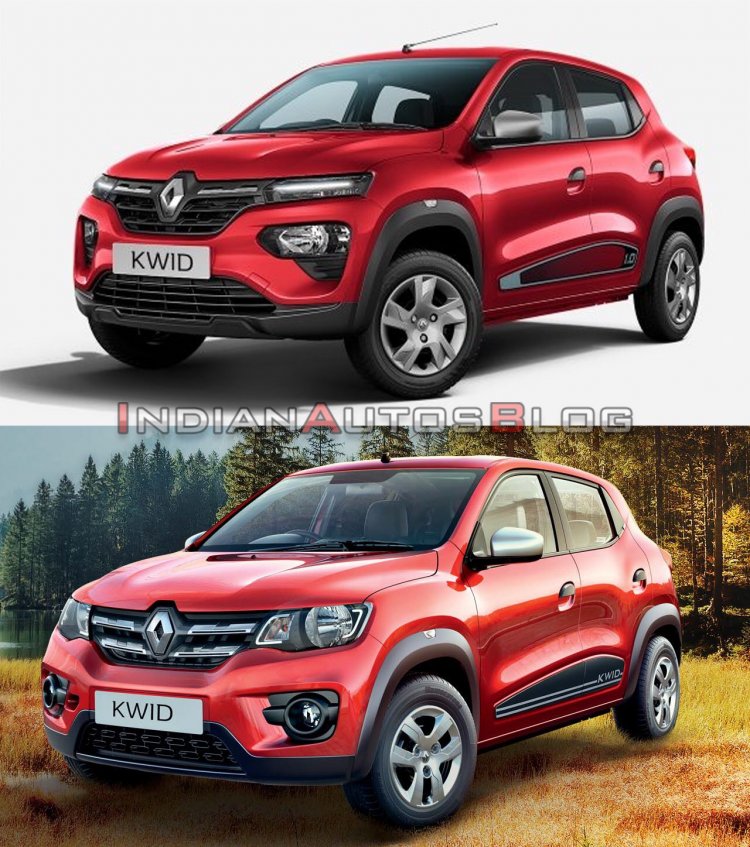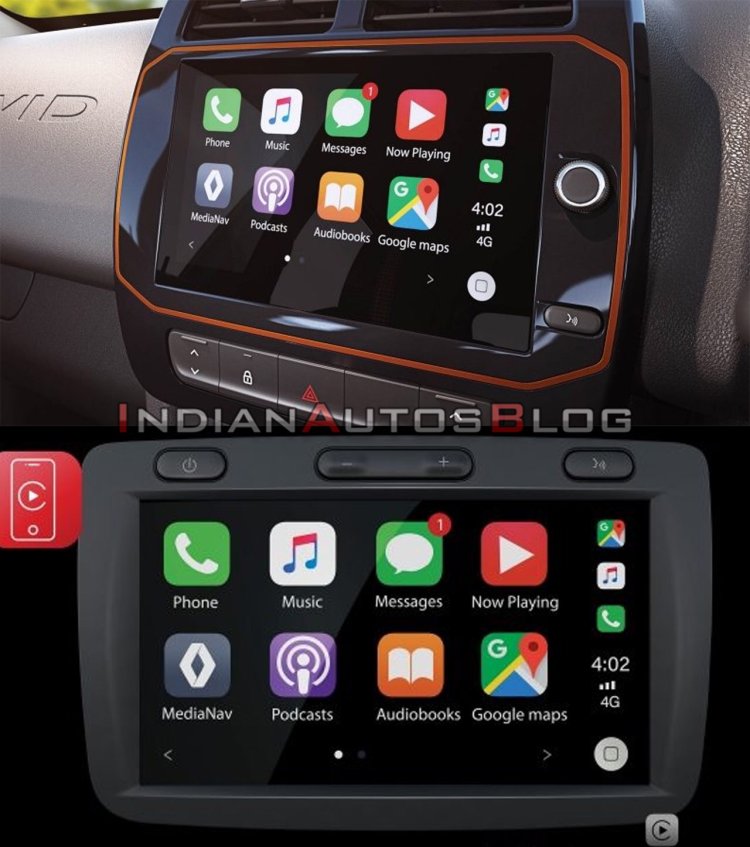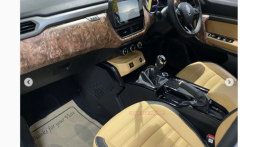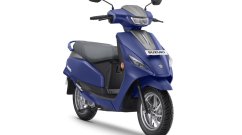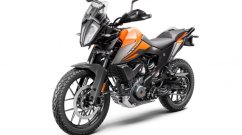Easily the most significant product in Renault’s India lineup, the Kwid has been a game changer in the entry level micro hatchbacks ever since its launch back in 2015. Four years later, this highest selling car of Renault in India has got its first major visual update.
The new Renault Kwid is easily recognisable as the new version with the heavily tweaked front fascia. The grille has become slimmer towards upper edges, and the use of chrome has been limited to the upper portion, unlike the two thick chrome slats in the previous iteration.
The bigger change here, however, is the placement of headlights, which have moved downwards in the front bumper. The new model has slim LED daytime running lamps where the headlamps used to be in the previous model, while fog lamps are not included.
The profile of the Renault Kwid witnesses absolutely no changes, save for the new design for the 14-inch wheel caps and alloy wheels. At the rear, the tail lamps have been tweaked and include LED light guides.
Thanks to the revised design, the new Renault Kwid measures almost 52 mm longer (3,731 mm compared to the previous model’s 3,679 mm). However, despite having a ground clearance of 184 mm – 4mm higher than that of previous model and sitting on 14-inch wheels as compared to 13-inch wheels of the erstwhile model, the new Kwid has a lower height of 1,474mm – 4mm lower than the height of the old Kwid. The width and wheelbase, however, are the same, at 1,579 mm and 2,422 mm, respectively.
Step inside, and be ready to witness an even fresher wave of change in the new Renault Kwid. The dashboard has been redesigned, which now see the placement of a larger and more modern looking 8-inch touchscreen infotainment system. This makes the dashboard look even more premium, as the 7-inch system in the erstwhile model was beginning to look dated. The additional embellishments which make the centre console more inviting now are piano black finish as well as chrome garnish, which were not present in the old model.
Another bigger visual change is the more comprehensive looking fully digital instrument console, which includes a tachometer as well. The steering wheel, too, is an all-new unit, a straight lift-off from the recently launched Renault Triber. In the automatic variants, the placement of the rotary style gear shifter has been changed from the dashboard to the floor console.
Talking about the set of comfort and convenience features on the inside, the Renault Kwid retains Apple Carplay and Android Auto connectivity for the infotainment system and rear centre armrest from the previous model. However, the higher variants now finally are blessed with power windows at the rear as well, something which were badly missed previously.
The one area where Renault has played it safe is the engine options. The 0.8-and 1.0-litre three-cylinder engines have been carried forward with no changes to their performance numbers – 54 PS/72 Nm in 0.8-litre and 68 PS/91 Nm in 1.0-litre mill. Even both the 5-speed MT and AMT see no alterations.
Under the skin, the suspension setup of Macpherson struts with lower transverse link at the front and twist beam suspension with coil springs at the rear is the same as before. However, the tyres and wheels are bigger now – 165/70 R14 as compared to 155/80 R13 in previous Kwid. The fatter tyres and bigger wheels will enhance both the ride quality as well as handling characteristics.
As a considerable step, Renault has retained the compulsory set of standard safety features including the driver airbag (additional passenger airbag in top-spec variants), ABS with EBD, reverse parking sensors, seat belt warnings for front seats and high-speed warning system. A front passenger airbag is available.
